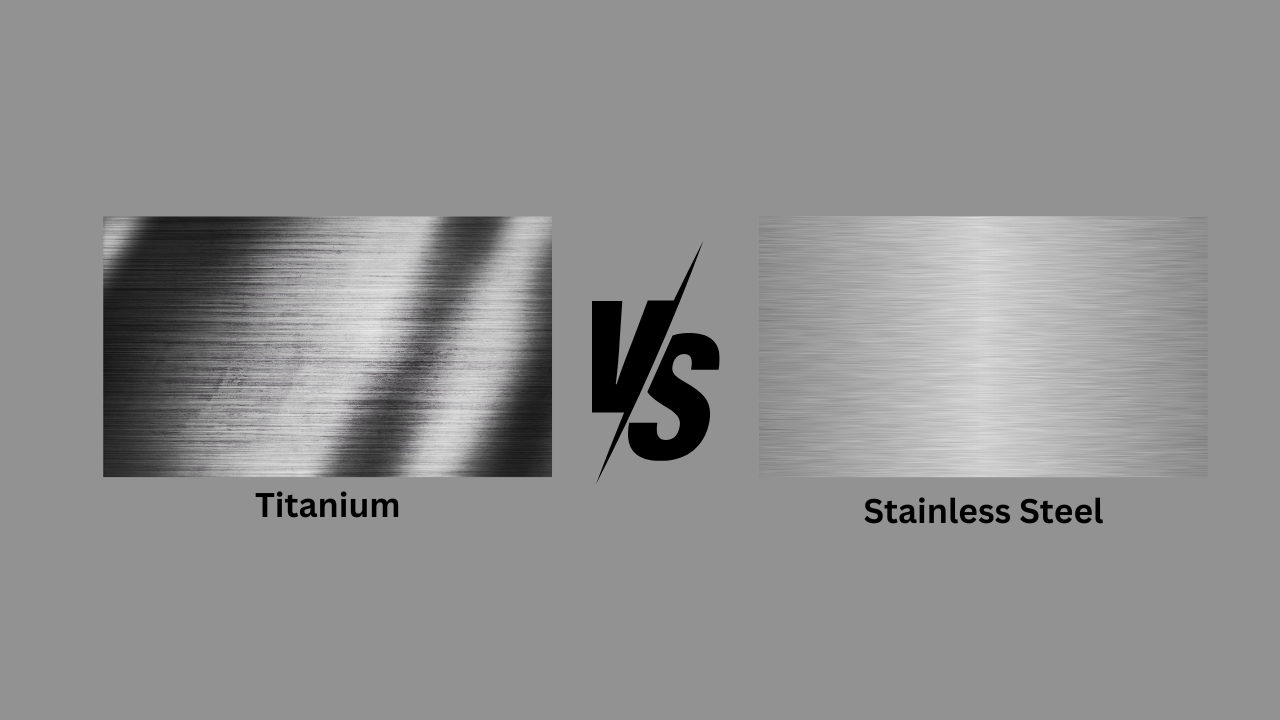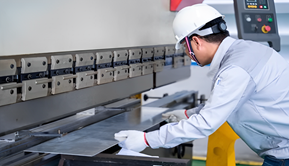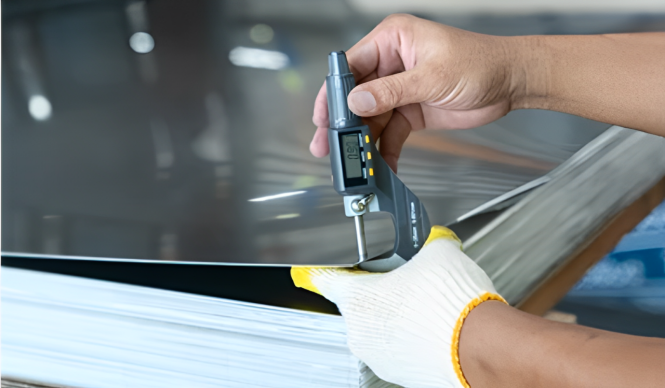Stainless Steel vs Titanium – Applications/Cost/ Weight
Referring to the Stainless steel vs Titanium both are versatile and robust in nature. Both have established their niches within sectors such as aerospace construction, jewellery and cookware. On the same note, choosing the appropriate material is not always an easy process. Therefore, it is necessary to decide what material is more suitable for specific work, comparing their characteristics, price, and the purpose they are going to be used for.

With all that having been made clear, this article will help you distinguish between titanium and stainless steel and therefore, will guide you in finding the right option for yourself . Certain topics discussed include their hardness, thermal properties, electrical conductivity, density, and corrosion resistance. Also, we will evaluate their efficacy in actual usage such as in cooking utensils, ornaments as well as in implantation and surgery.
Table of Contents
ToggleMaterial Properties of Titanium vs Stainless Steel
Strength Comparison: Titanium vs Steel Strength
| Sr. No. | Property | Titanium | Stainless Steel |
| 1 | Density (g/cm³) | 4.51 | 7.85 |
| 2 | Tensile Strength (MPa) | 140 | 350 |
| 3 | Hardness (Brinell) | 70 | 121 |
| 4 | Ductility (%) | 54 | 15 |
| 5 | Thermal Conductivity (W/mK) | 22 | 45 |
| 6 | Elastic Modulus (GPa) | 116 | 200 |
| 7 | Fatigue Strength (MPa) | High | Depends on alloy |
| 8 | Melting Point (°C) | 1670 | 1538 |
| 9 | Electrical Resistivity (Ω·m) | 42.6 | 15.9 |
| 10 | Specific Heat Capacity (J/kg·K) | 523 | 465 |
| 11 | Oxidation Resistance | Excellent | Good (varies with alloy) |
| 12 | Corrosion Resistance | Excellent | Varies with alloy (stainless steel is highly resistant) |
| 13 | Magnetic Permeability | Non-magnetic | Magnetic (varies with alloy) |
| 14 | Thermal Expansion (μm/m·K) | 8.6 | 12 (carbon steel) |
| 15 | Impact Resistance | High | Good (varies with alloy) |
Tensile Strength of Titanium vs. Steel
Strength is a very critical measure of any material with regard to its use in structural components. It is specially popular comparing its strength to weight ratio. Titanium has loghter weight in comparison to steel but offer higher tensile strength. For instance, Grade 5 titanium material has about 950 MPa in tensile strength and the 304 austenitic stainless steel around 505 MPa. However, some of the stainless steels such as 17-4 PH can elongate to tensile strengths comparable to those of titanium alloys.
Parameters like the type of the alloy, heat treatment or manufacturing procedure perhaps highly instrumental in affecting tensile strength. For instance, incorporation of nickel and chromium to steel results to stee increases its strength but compares it with other light weight but strong material such as the titanium alloys.
Is Stainless Steel Stronger Than Titanium? – Revealing Yield Strength
Yield point is used to determine the flow stress of a material on the subject of stress on the particular material. In terms of yield strength, therefore, titanium is known to be less strong than stainless steel and is more prone to deformation when in use. For example, Grade 2 titanium has yield strength of about 275 Mpa, where 304 stainless steel provides a yield strength of about 215 Mpa. However, some certain stainless steels like 301, have a yield strength that is many folds higher of 1000 MPa.
The yield strength depends heavily on the nature of the alloy. For example, introduction of vanadium in titanium alloys can improve the yield strength as well as make them bear resemblance to high strength steel.
Fatigue Strength: Long-Term Durability
Fatigue strength is applicable to cases where the object will be under cyclic loading like in aircrafts or automobile parts. Titanium is usually of higher fatigue strength as compared to stainless steel and this makes it suitable for parts that undergo cyclic loading. For instance, in aerospace applications, the high fatigue strength of titanium means that it holds up over time and does not require replacement as often.
Albeit, stainless steel is a layered material which can be subject to catastrophic failure under fatigue loading and in applications with high stress concentrations. However, stainless steel has some alloys to enhance the fatigue strength and reduced the competition with these two components.
Is Titanium Harder Than Stainless Steel? – Exploring Hardness
Hardness of Titanium on the Mohs Scale
Normally, hardness of Titanium is between 6 and 6. 5 on the Mohs scale, although this value may vary depending on the type of the alloy and heat treatment. Due to this hardness, it does not easy to scratch or wear and therefore it is used in critical applications including those of surgery implantation and aerospace engineering.
Mohs Hardness of Stainless Steel
the Mohs hardness of stainless steel is relatively low with a rating of between 5. undefined Less hard but more vulnerable to scratching and wearing off than titanium. It is most apparent for objects such as jewellery where the increased hardness translates into enhanced durability commonly observed in Titanium.
Hardness in Practical Applications
In practical cop perations, the hardness of a material might define what roles can or cannot be given for its use. For instance, more hardness of titanium makes it suitable in fabrication of tools and parts that require high strength and resistance to wear down while the slightly lower hardness of stainless steel is desirable in manufacturing processes as it is easier to form and shape.
Thermal Properties: Is Titanium Heat Resistant?
Ti Thermal Conductivity: Titanium Heat Transfer Properties
Titanium has comparatively lower k value, or in other words, it has less capability to transfer heat than stainless steel. In some applications, such as heat insulation, this property may be of benefit. For instance, in aerospace applications where high-temperature invariance in some elements is required without affecting the temperatures of the other parts, then titantium find its application.
Titanium Heat Resistance and Application
Another significant benefit of titanium is its high heat tolerance, which would benefit applications where products are exposed to high temperatures. It stays strong at temperature ranges while stainless steel may start to experience some structural loss of strength. This is especially useful in applications such as aerospace or automobiles since such materials can be exposed to high temperatures.
Melting Point: What Temperature Does Titanium Melt?
The main properties of titanium are its very high melting point of about 1670 °C or 3034 °F while stainless steel melts between approximately 1400 °C to 1530 °C which is between 2552 °F and 2786 °F. This enhanced melting point of titanium provides it an added advantage more so when used in applications that require material with high heat resistance.
Electrical Conductivity: Is Stainless Steel Conductive?
Electrical Conductivity of Titanium
One of the properties of titanium is that it is an Electrical non-conductor. They often have low electrical conductivity as compared to materials such as copper or even aluminum. This makes it less preferable where the electrical conductivity is necessary but can be preferable where electrical insulation is required.
Conductivity in Engineering
In engineering applications, one of the disadvantages of titanium is in its low conductivity unless insulation is desired. Stainles steel is also not such a good conductor as the others but is slightly better than titanium and thus is better used for electrical purposes like electrical boxes and groundings.
Density and Weight: Titanium vs. Stainless Steel Weight
Weight of Stainless Steel vs. Titanium
Ti has forty percent lesser in weight than stainless steel. It has a low density which is preferred in cases of weight concession for example aerospace and automobile industries. Here, concerns such as relative density put titanium out of the question especially when it comes to fabricating components that must be both strong and lightweight compared to stainless steel.
Material Selection Based on Weight
One of the most critical factors that differentiate two materials is their density and therefore overall weight, of titanium and stainless steel. This is particularly evident in aerospace where the overall weight of the aircraft can result in tens of thousands of dollars in saving through the use of such materials like titanium. Applied to auto industry, incorporating titanium within the structure reduces the overall weight meant for the cart and thus improves behaviour in traffic and fuel conservation.
Corrosion Resistance: Steel vs Titanium
Corrosion Resistance of Titanium
Titanium has excellent corrosion resistance, so its application is perfect for using in extreme conditions – underwater and chemical production. An passive oxide layer form up on the outer side which strongly resist corrosion, rusting, and in adverse conditions.
Corrosion Resistance of Stainless Steel
It has higher corrosion resistance but, it is not as strong in some circumstances as titanium is in some severe circumstances. For instance, where we want a material that does not corrode easily, stainless steel is useful, but in highly salty or acidic environment, it will corrode whereas, titanium will not.
Magnetic Permeability: Magnetic Properties of Titanium vs. Stainless Steel
Magnetic Permeability of Titanium
Non-magnetic, and this can be an advantage in some cases where magnetic coupling is undesirable. For instance if used in medical devices such as MRI or in other machinery titanium is disadvantageous given the fact that it is not magnetic in any way and thus poses no threat to any delicate equipment.
Stainless Steel Magnetic Permeability
For instance austenitic Stainless Steel anines like the types 304 and 316 are nonmagnetic in nature while the Ferritic and Martensitic types are magnetic in nature . This versatility means that stainless steel can be used in a variety of product types, but its magnetic property may require moderation.
Ductility: Flexibility and Formability of Titanium vs Steel
Ductility of Titanium
Ductility is another property that is inherent in Titanium: it can be bent or stretched without breaking, cracking or shattering. This property make it suitable in forming and shaping operations and this may include in aerospace industries where titanium parts are shaped in the process.
Ductility of Stainless Steel
In terms of ductility, stainless steel also presents acceptable rates, however formability is not stable and depends on the use of the exact kind of the material. For instance, austenitic stainless steels are more malleable and easier for the manufacturing process when compared to martensitic stainless steels, which are brittle and rigid. The high degree of ductility in stainless steel makes it used in parts like auto mobile body-line, and kitchen utensils which often involves bending into complex shapes.
Titanium vs Steel – Application Comparisons
In reality the comparison comes down to the properties of the two metals and how well they work in practice. Whether the application is cookware, jewelry, or medical devices, knowing how and where each material is strong and weak is useful in selecting the proper material.
Stainless Steel vs Titanium Derma Roller
Speaking about the derma rollers, the ones made from stainless steel and titanium are different and there are preferences between both. The stainless steel derma rollers comprises of features including toughness, good sterilization, and cost-effectiveness. While titanium is highly durable and resist rust. As for the maintenance and durability titanium derma roller might be a better choice as it would not need frequent sharpening. Whereas stainless steel provides an optimal mix of efficiency and expense.
Stainless Steel vs Titanium Rings
So with rings titanium base and stainless steel offer different advantages. Cobalt chrome rings are very durable, light-weight and to top it off; resistant to scratches which can come in handy on a day to day basis. They also do not produce any proteins associated with allergies, which is very important to people with skin sensitivity. Stainless steel rings on the other hand, are heavier and produce the traditional metallic shine that is very attractive, and they are hypo-allergic. They may need to be polished more often to maintain their condition than other shoes that are sold atthe stores. However, for durability and easy maintenance, the titanium is the most preferable while if one wants more classic appearance of the ring then stainless steel is more advisable.
Stainless Steel vs Titanium Cookware
Titanium and stainless steel – is a dilema in cookware as well The choice depends on various factor again. It is lighter; can be used for a longer time; and does not corrode easily, which makes it suitable for use when going for camping among other uses. It also has gained its requisite temperatures rather swiftly, making your endeavours of heating, easier and faster. Nonetheless, stainless steel cookware is cheaper and retains heat for more time and is suitable for all types of stoves including the induction one.
Titanium vs Stainless Steel Medical Implants
Applications of titanium and stainless steel severely varied in the medical field for implants. Titanium is the preferred material for a number of applications – for instance for hip replacements and dental implants – because of its biocompatibility, anticorrosive properties, and osseointegration. Finally, temporary implants–such as screws and plates–can be made of stainless steel because it is strong and less costly. For long term usage prefer titanium and for short term usage prefer steel.
Conclusion
The choice of titanium or stainless steel dependent on one’s specific requirements. If you need low weight and higher durability and better corrosion resistance, then select titanium. However, if cost, availability of a suitable material, and a gray metallic look are more desirable, stainless steel could be preferred. Both materials hold their advantages and are widely used in aerospace and medical industries, mechanics, consumer goods production, construction, etc. By doing this you will be in a position of making the right decision that will allow you to use the right material in your project .




4 Responses